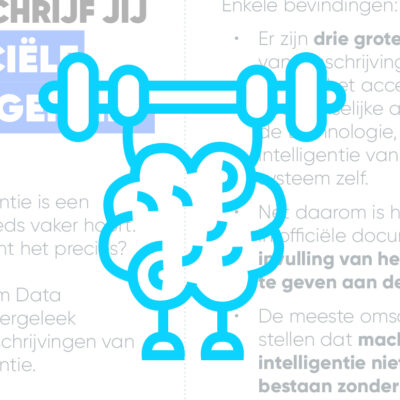brAInfood: What is legal sandboxing for AI?
Date of publication: April 2020
WHAT IS THIS BRAINFOOD ABOUT?
This brAInfood discusses the topic of 'legal sandboxing' for artificial intelligence (AI) in more detail, as mentioned by the High-Level Expert Group on Artificial Intelligence (AI HLEG) of the European Commission in the document 'Policy and Investment Recommendations for Trustworthy AI'. But what exactly are 'legal sandboxes'? What is their added value, and for whom are they an added value? How will they be designed?
In order to get more clarity about this, the Knowledge Centre Data & Society asked Katerina Yordanova, researcher at CiTiP (KU Leuven) specialising in the area of human rights law in the digital environment and business and human rights, some questions about 'legal sandboxes' for AI. She also wrote an article 'The Shifting Sands of Regulatory Sandboxes for AI' on the blog of the CiTiP research centre in which she elaborates on the concept of 'legal sandboxes' and the origin of such 'sandboxes'.
WHY SHOULD I READ THIS?
If you program, implement and/or manage an AI system, this brAInfood may be of interest to you because it clarifies some ambiguities related to 'legal sandboxes'.
With this brAInfood we hope to feed the debate on artificial intelligence and to provide a guideline for the development and implementation of 'trustworthy' AI. The brAInfood includes some questions regarding the implementation and use of 'legal sandboxes' for AI. These questions were answered by Katerina Yordanova, researcher at CiTiP (KU Leuven), with the aim of giving you more information and clarity about the relatively new concept of 'legal sandboxes' for AI.
WHAT CAN I FIND OUT WHEN READING THIS?
This brAInfood from the Data & Society Knowledge Centre includes:
- A series of questions about 'legal sandboxes' for AI. Who will be able to use these? Which type of AI systems are most interesting to test in such a sandbox? What data will be used for this? Where will such a sandbox take place? Which legislation must the sandbox comply with? What happens if the sandbox experiment goes wrong? The questions were answered by Katerina Yordanova, researcher at CiTiP (KU Leuven), specialising in the area of human rights law in the digital environment and business and human rights. The answers to these questions clarify some ambiguities about 'legal sandboxes'.

DOWNLOADS
With brAInfood, the Knowledge Centre Data & Society wants to provide easily accessible information about artificial intelligence. brAInfood is available under a CC BY 4.0 license, which means that you can reuse and remix this material, provided that you credit us as the source.
